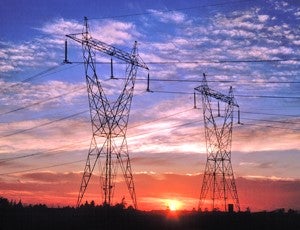West Texas Electricity Prices Skyrocket – Demand Response Is The Answer

The Wall Street Journal recently reported that electricity prices in West Texas skyrocketed over 20% this year. West Texas is home to the Permian basin, one of the world’s largest oilfields, and energy producers use hydraulic fracturing, or “fracking,” here to unlock vast new oil and gas supplies. The increased drilling, oil refining and natural gas processing uses large amounts of electricity.
Cheaper electricity supplies are available, but cannot be delivered to West Texas due to transmission bottlenecks, or “congestion.” The only power that can be delivered is from older coal plants. This leads to transmission “congestion” charges (i.e., higher energy supply costs caused by the transmission bottlenecks), which commercial and industrial consumers must pay as a surcharge on their monthly electricity bills. Using these older coal plants leads to more pollution as well because these plants burn fuel less efficiently and have higher levels of toxic air emissions.
The typical solution is to build new transmission lines to access cheaper electricity supplies. But a better and cheaper approach is to pay consumers for voluntarily reducing their electricity usage when energy supplies are tight. Known as “demand response,” this solution:
- creates a new market where consumers can respond to wholesale electricity price signals by deciding whether to use higher-priced energy or to be paid for voluntarily reducing their usage;
- defers investment in new fossil fuel power plants and costly transmission upgrades;
- lowers electricity prices for all consumers, not just those who are paid for voluntarily reducing their usage; and
- keeps our air cleaner and preserves our scarce water supplies by running older, dirtier coal plants less often.
“Everything is bigger in Texas,” but not demand response. Although it has more potential demand response than any other state, Texas has actually implemented only a small amount of demand response – which is used to avert rolling blackouts during electric emergency conditions. Other regions of the country use demand response to much greater advantage. Voluntary demand response programs in PJM, the electricity market in the northeast, have paid consumers nearly $2 billion in demand reduction revenues since 2007.
Demand response would lower electricity prices not only for West Texas but throughout the state. Electricity prices are a function of supply and demand. Texas tries to maintain adequate electricity supplies through an “energy-only” wholesale market, which procures electricity supplies in real-time with no long-term planning. Texas is the only region in the U.S. using this method. Other regions ensure adequate electricity supplies by using either administrative mandates or an energy market combined with a “capacity market” (a market-based approach using long-term planning).
Texas has inadequate electricity supplies (the “energy crunch”) to meet projected electricity demand plus a healthy safety margin. Texans learned this lesson the hard way when consumers experienced rolling blackouts during a cold snap in February 2011 and the extreme heat and drought in July and August 2011. The Electricity Reliability Council of Texas (ERCOT), which runs the Texas wholesale electricity market, hired The Brattle Group to study how to ensure adequate electricity supplies. Brattle advised ERCOT that energy supplies could be increased by, among other things, re-designing the market to enable much higher levels of demand response. This could be done by implementing a capacity market, such as the forward capacity market used in PJM or the new and innovative “flexible capacity” market under consideration in California.
ERCOT can relieve high West Texas energy prices and assure adequate electricity supplies for the state as a whole by enabling much higher levels of demand response. Let’s bring the Lone Star State a new market-based solution where Texans, as a whole, can earn billions of dollars in payments for voluntarily managing their electricity use. As part of the bargain, we’ll also get adequate electricity supplies, lower electricity prices, cleaner air and better water management.











